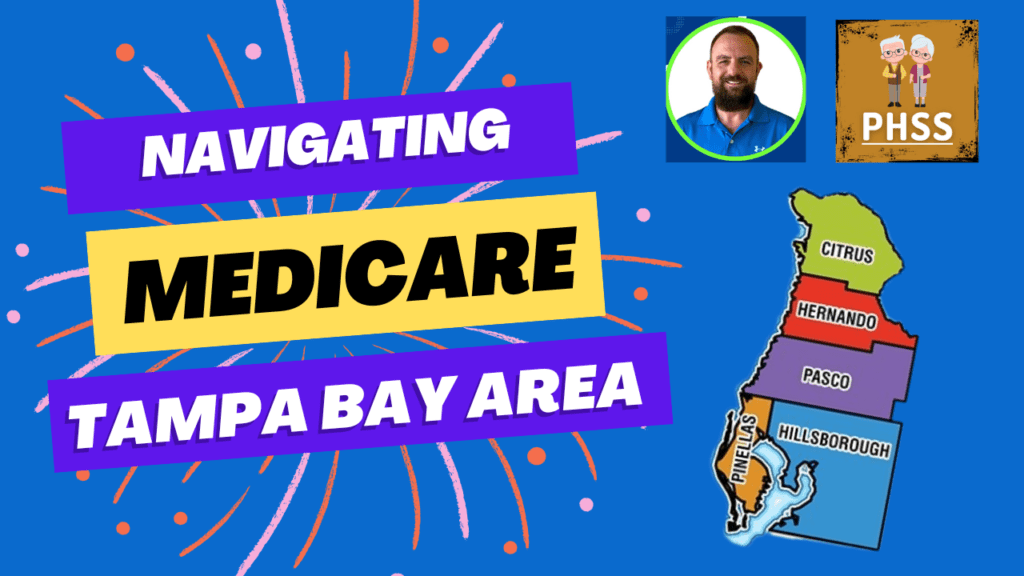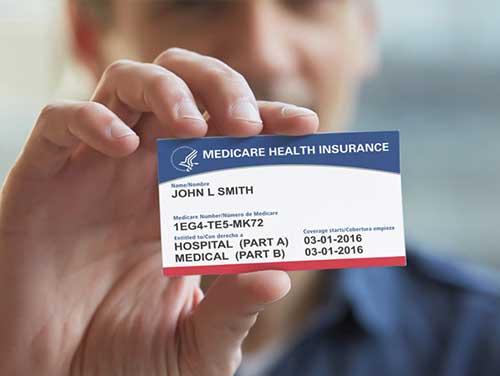Navigating Medicare in Tampa Bay

Are you a resident of the beautiful Tampa Bay area in Florida? As you enjoy the sunny beaches and vibrant culture, it’s essential to have a solid understanding of your healthcare options. One such option is Medicare, a federal health insurance program that provides coverage for individuals aged 65 and older, as well as certain younger individuals with disabilities. In this blog article “Navigating Medicare in Tampa Bay“, we’ll explore what Medicare is, who is eligible, how to enroll, the associated costs, and share some tips to make the process easier for Tampa Bay residents.
It is my intention to answer most of your questions in this article, but if I miss something please email me at daniel@pascohernandoseniorservices.org and I will answer your question.
What is Medicare?
Medicare is a government-funded health insurance program administered by the Centers for Medicare & Medicaid Services (CMS). It was established in 1965 to provide affordable healthcare coverage to seniors and individuals with specific disabilities. Medicare is divided into several parts, each covering different aspects of healthcare:
Medicare Part A: Hospital Insurance – Covers inpatient hospital stays, skilled nursing facility care, hospice care, and limited home healthcare services.
Medicare Part B: Medical Insurance – Covers doctor visits, outpatient services, preventive care, and medical supplies.
Medicare Part C: Medicare Advantage – Private insurance plans approved by Medicare that combine Part A and Part B coverage, often including additional benefits like prescription drug coverage.
Medicare Part D: Prescription Drug Coverage – Optional plans provided by private insurance companies to help cover the costs of prescription medications.

Who is eligible for Medicare?
To be eligible for Medicare, you must meet one or more of the following criteria:
- You are 65 years or older.
- You are under 65 with certain disabilities, such as end-stage renal disease (ESRD) or amyotrophic lateral sclerosis (ALS).
Most people become eligible for Medicare automatically when they turn 65 if they receive Social Security or Railroad Retirement Board benefits. If you’re under 65 and have a disability, you may be eligible for Medicare after receiving Social Security Disability Insurance (SSDI) or Railroad Retirement disability benefits for 24 months.
How and when can someone enroll in Medicare?
Navigating Medicare and understanding the enrollment process is crucial to ensure you receive timely coverage. The Initial Enrollment Period (IEP) is the first opportunity to sign up for Medicare. It begins three months before your 65th birthday month and ends three months after. If you’re eligible due to a disability, your IEP generally starts during the 22nd month of receiving SSDI or Railroad Retirement disability benefits.
To enroll in Medicare, you can follow these steps:
a. Visit the official Medicare website (medicare.gov) or contact the Social Security Administration (ssa.gov) for guidance.
b. Complete the necessary forms and provide required documentation, such as proof of age or disability.
c. Choose between Original Medicare (Parts A and B) or Medicare Advantage (Part C) if available in your area.
d. Consider adding prescription drug coverage (Part D) if desired.
e. Review and compare available plans based on your healthcare needs and budget.
How much does Medicare cost?
Understanding the costs associated with Medicare is crucial for effective financial planning. While some aspects of Medicare are premium-free, others involve specific expenses. Here’s a breakdown:
Medicare Part A: Most beneficiaries don’t pay a premium if they or their spouse paid Medicare taxes while working. There are deductibles and coinsurance for hospital stays and skilled nursing facilities.
Medicare Part B: The standard premium amount varies annually but is typically income-based. There’s also an annual deductible, and you’ll typically pay a percentage of covered services.
Medicare Part C: Costs for Medicare Advantage plans vary depending on the specific plan, and some may require additional premiums on top of the Part B premium.
Medicare Part D: Prescription drug plan costs differ between plans, including monthly premiums, deductibles, and copayments or coinsurance.
Tips that can make the process easier:
Navigating Medicare can seem overwhelming, but these tips can help simplify the process for Tampa Bay residents:
Educate yourself: Take the time to understand the different Medicare parts, coverage options, and associated costs.
Start early: Begin researching and planning for Medicare well before your 65th birthday or the disability eligibility date. This ensures you have ample time to gather information, compare plans, and make the best choices for your healthcare needs.
Seek assistance: If you find the process confusing or need personalized guidance, reach out to a licensed insurance agent specializing in Medicare. These professionals can help you navigate the various options and find the most suitable plan for you.
Stay informed: Keep up-to-date with changes in Medicare policies, coverage, and enrollment periods. Subscribe to newsletters, attend community workshops, or join local support groups to stay informed about any updates that might affect your coverage.
Conclusion
As a Tampa Bay resident, understanding the ins and outs of Medicare is crucial to ensure you receive the healthcare coverage you need. By grasping the basics of what Medicare is, who is eligible, how to enroll, associated costs, and following some useful tips, you can confidently navigate the Medicare system. Empower yourself with knowledge and take advantage of the resources available to make the best decisions for your healthcare needs in the Tampa Bay area.


